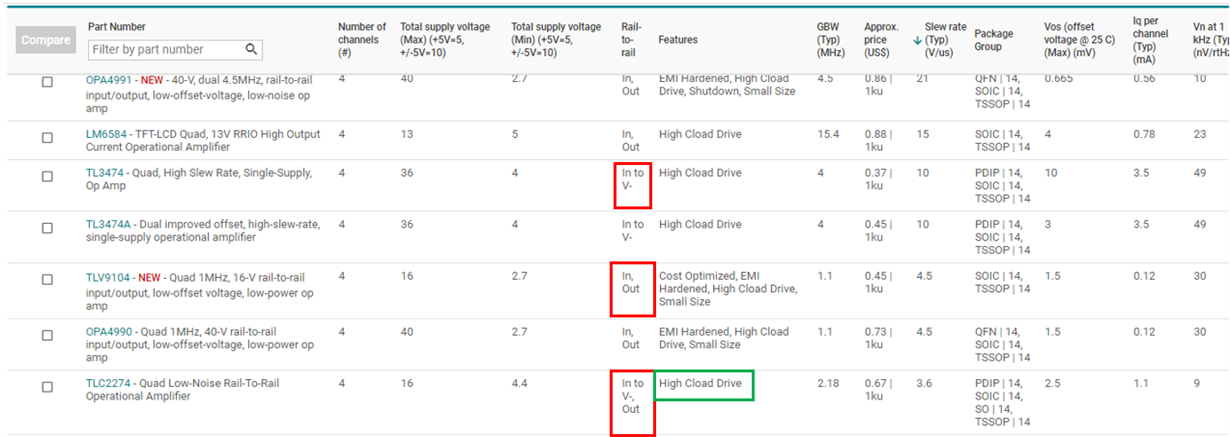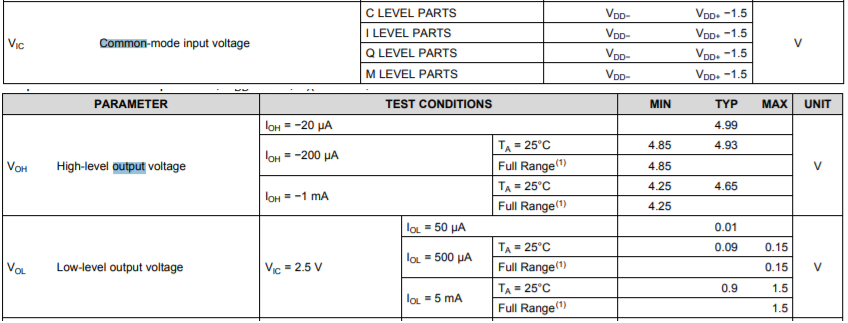Other Parts Discussed in Thread: OPA4991, TL3474, OPA4191, OPA4192, OPA2156
Hi, I usually used TLC2274 for op-amp as buffer circuit.
(Connecting In- to Out. Gain = 1)
I want to use more faster slew rate op-amp with rail to rail.
.
So I searched in the TI Hompage,
And I found there are some different kinds of rail to rail features as below.
1. In to V-
2. In, Out
3. In to V-, Out.
.
TLC2274 has rail to rail feature as In to V-, Out.
Here are my questions.
.
1. What is different between In to V-, Out // In to V- // In, Out.
.
2. And what is High cload drive mean?
.
I want to use same feature as TLC2274 and more slew rate. (going to use as just buffer circuit. connecting V- to Out directly)
3. And please, Could you recommend any op amp that has faster slew rate the TLC2274 and has same feature? (4ch, 2ch, 1ch don't care)
.
Thanks.





